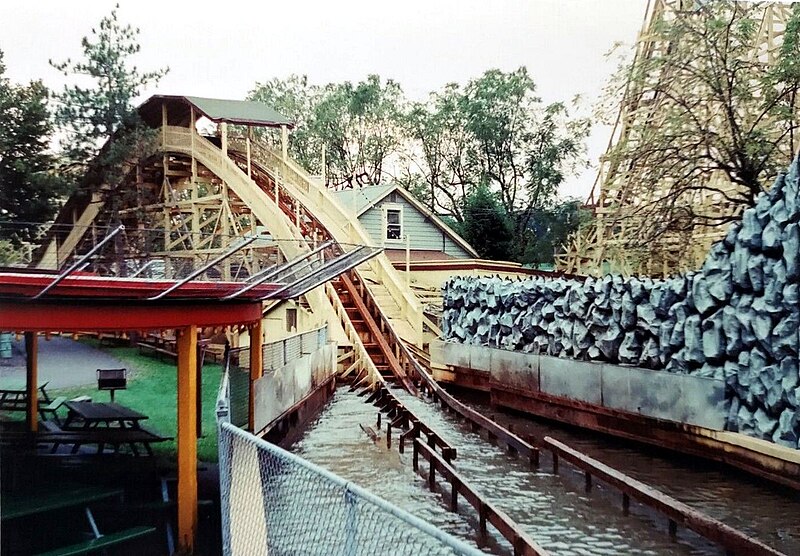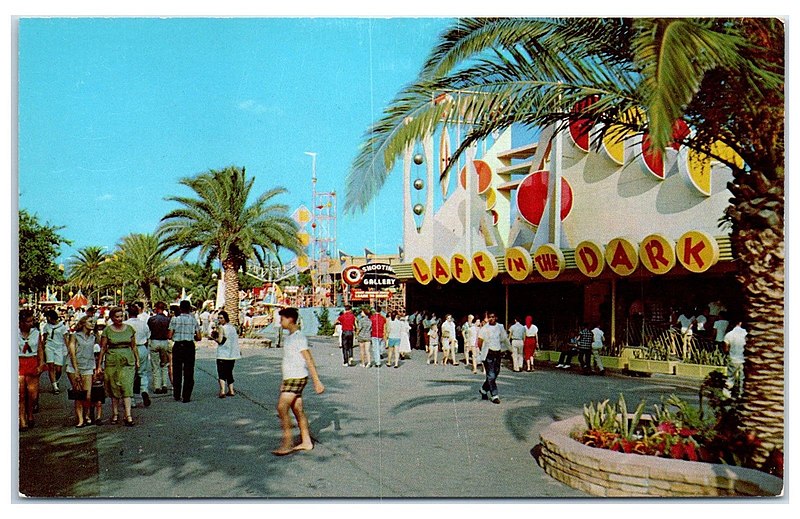Long before iconic dark rides such as the Haunted Mansion or Revenge of the Mummy were even conceptualized, the amusement park business was eager to develop something new and thrilling to keep visitors coming back time and time again. Dark rides have become a staple in many theme parks worldwide, but the high tech and immersive experiences we have today are a far cry from what they were when they were first brought onto the scene.
Today I’ll be discussing the history of one of the earliest incarnations of a dark ride introduced in the United States — a funhouse-like dark ride known as Laff in the Dark.
Although Laff in the Dark was not the first dark ride, it incorporated a lot of features that made the previous variants so enjoyable and expanded on them. Laff in the Dark was a pretzel style dark ride, called such due to the twisting path through an enclosed, darkened space. Pretzel dark rides were created as a more affordable option to the popular Old Mill style attractions that were found in several amusement parks during the late 19th century.

Unlike the boats floating along guided water channels of the Old Mill rides, the cars of the Pretzel followed a single electrified track through the building. The Pretzel ride debuted in 1928, spearheaded by Leon Cassidy and Marvin Rempfer. After the success of the Pretzel, the duo went on to create the Pretzel Amusement Ride Company the same year to begin manufacturing Pretzel rides for use in parks nationwide.
The ride lasted around a minute and a half and was packed with practical props and effects that would ‘interact’ with the car as it passed. In 1929, a Pretzel ride costed $1,200 and came with 350 feet of track and five cars.
As the car rolled along, it would pass certain key activators that would trigger a prop to ‘jump out’ at visitors or create a loud sound effect.
Harry Traver, a famous coaster designer for the Traver Engineering Company, saw the potential of the Pretzel and began to manufacture his own version of the ride. This version became known as Laff in the Dark, a more budget-friendly option for smaller parks. Though clearly inspired by the Pretzel, Traver incorporated enough changes to the layout, design of the track, and prop stunts to avoid infringing on the rights held by the Pretzel Amusement Ride Company.
The popularity of Laff in the Dark was spurred by its inventive and more elaborate stunts than the Pretzel, operating more mechanically and with greater variety.
Traver and his company never trademarked the Laff in the Dark name, so many parks utilized the name for their Pretzel rides. Eventually, the Pretzel became almost synonymous with Laff in the Dark and the two variations held a presence in many parks through the early and mid 1900s.

However, the intriguing history of Laff in the Dark doesn’t end here. In 1976, a film crew for the television series “The Six Million Dollar Man” were using the interior of the Laff in the Dark attraction located at The Pike, an amusement park in Long Beach, California. While moving a mannequin prop for the shoot, an arm broke off and the crew were horrified to find that the stump left behind held muscle and bone tissue.
A real corpse had been strung up inside the dark ride, long thought to be a harmless prop. Following an autopsy of the recovered corpse, the man was identified as Elmer McCurdy, an American outlaw who passed away in 1911 after a train robbery gone wrong. Following his death, his body had become something of tourist attraction and a part of a traveling carnival, eventually winding up hidden away inside the Laff in the Dark ride. McCurdy was given a proper burial in 1977, and to ensure his body was never disturbed again, his casket was covered with two feet of concrete.
Unfortunately, this incident has become the main point of conversation surrounding the Laff in the Dark style of attraction rather than its ingenious engineering and unique ahead-of-its-time effects.
Today, very few remnants of this once popular ride exist. However, some parks that once boasted a Laff in the Dark attraction still have their own copy of a Laffing Sal. Laffing Sal was created by the Philadelphia Toboggan Company during the 1930s to promote and attract interest in funhouses or dark rides. These animatronics were precursors to the impressive audio-animatronics found in theme parks like Disneyland today, and would draw guests in with raucous, repetitive laughter.
Although Laff in the Dark is no longer around, these Laffing Sals can be found at several parks, including Kennywood, Hersheypark, Lakeside Amusement Park, and more. Though a bit unsettling in appearance and sound, consider paying a Laffing Sal a visit to see this piece of dark ride history in action.




